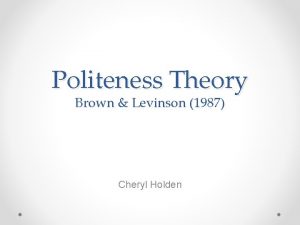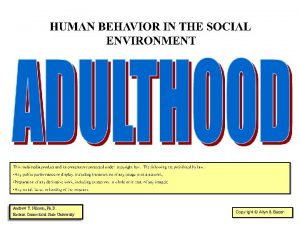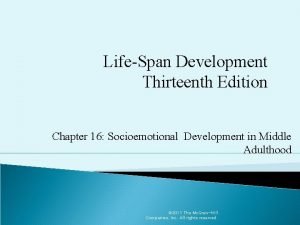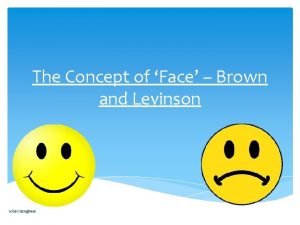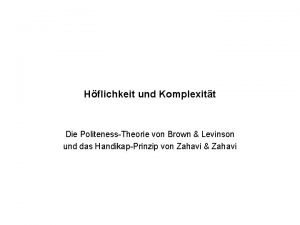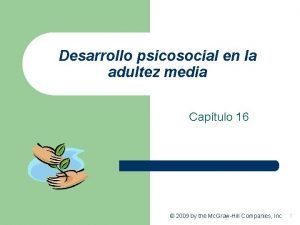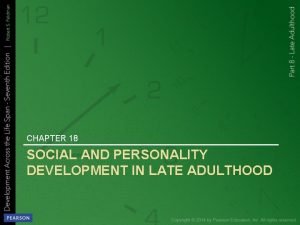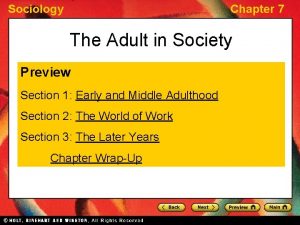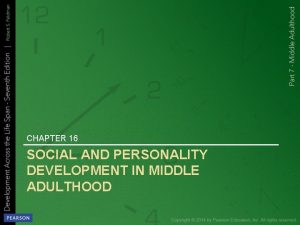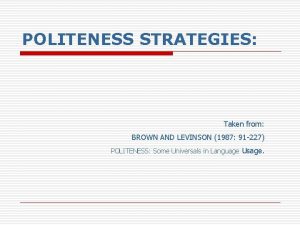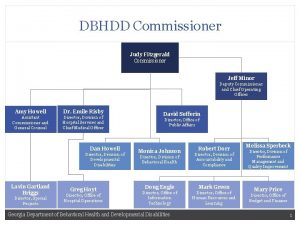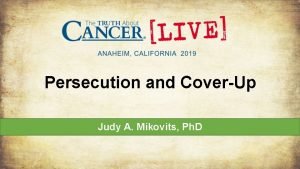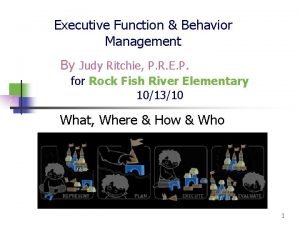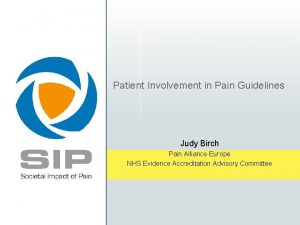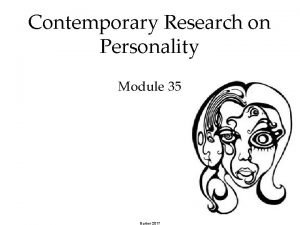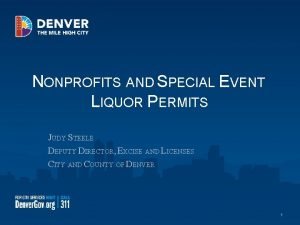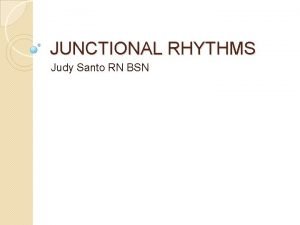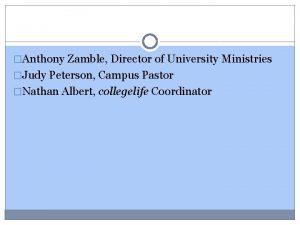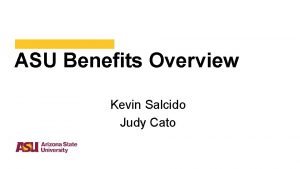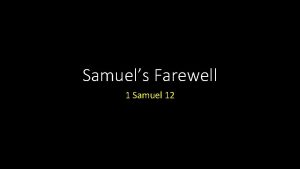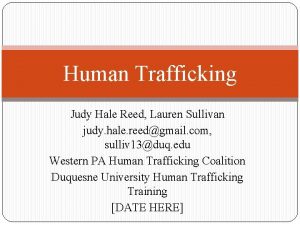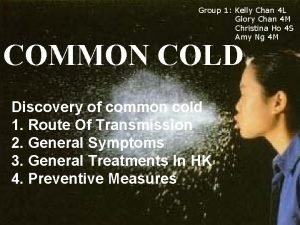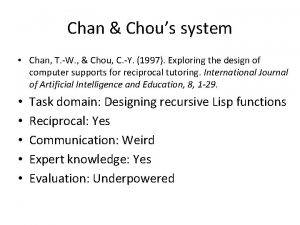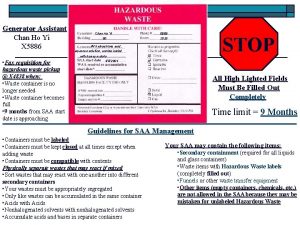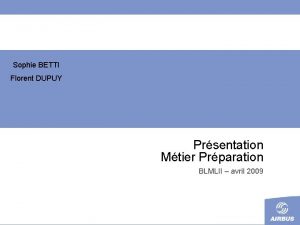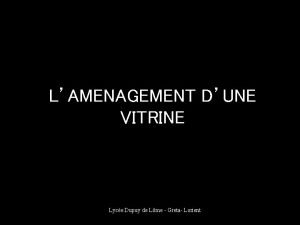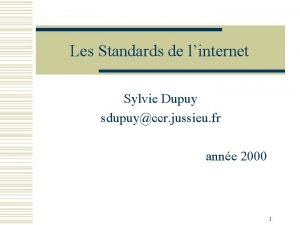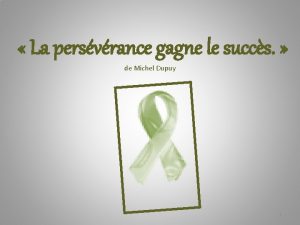Dupuy v Samuels Judy Chan Julie Levinson Heather

























































- Slides: 57

Dupuy v. Samuels Judy Chan Julie Levinson Heather Rosenberg

History of the Dupuy Case 1996 Illinois Attorney General passed legislation to require the Child Endangerment Risk Assessment Protocol form and annual reports from DCFS on success of CERAPS 1997 Diane Redleaf and Robert Lehrer filed case Dupuy v. Samuels: 150, 000 Illinois residents served as class members in a constitutional case challenging due process violations by DCFS: phase one involved childcare workers’ rights March 2001 Judge Pallmeyer ruled in favor of Dupuy’s challenges of little evidence and unfair blacklisting of childcare workers

History of the Dupuy Case 2002 A second claim (Dupuy II) was filed, challenging the constitutionality of safety plans September 2003 DCFS implemented the requirements ordered by Pallmeyer concerning childcare workers March 2005 Pallmeyer ruled that safety plans lasting more than a few days violate substantial and procedural due process rights of families

History of the Dupuy Case December 2005 Court directed process of review of safety plans after 14 days October 2006 Judge Richard Posner (7 th Circuit Court of Appeals) ruled safety plans are voluntary February 2008 Family Defense Center filed a petition asking the U. S. Supreme Court to review constitutionality of DCFS’s safety plans

The Dupuy Family Story In 1995, Belinda Dupuy and her husband Jeff "Bear" Dupuy ran a licensed day care center in their home in Carterville, Illinois. They were accused of child abuse/neglect. Belinda: I thought they were saying was that my husband or I had been abusing kids and I - it just was just gut-wrenching. I mean, I - there's no way. Bear: This came from so far out leftfield, we were just absolutely flabbergasted. That's absolutely the most horrible thing you could ever, you know, think of in a day care. Source: Dateline NBC "Clearing Names, " aired on May 4, 2001

The Dupuy Family Story A local newspaper printed a story about the alleged sexual abuse at the Dupuys' day care center. Belinda: I was spit on when I went into the grocery stores. . . I was out in my yard working on it, and someone threw a torn-up doll at me with all kinds of stuff on it and said - he said, "Here, go play with this. " After the investigator talked to more day care families, she didn't find anything against Belinda, but now 10 -year-old Sara was under suspicion.

The Dupuy Family Story Sara's classmates soon heard of the allegations and called her a child molester. Sara: I came home that night and I held a butcher knife to my neck and I tried to kill myself. In December 1995, Belinda, Bear, and Sara filed appeals with DCFS to get their cases reviewed. The Dupuys filed for bankruptcy in February 1996. In March 1996, the Dupuys learned that because of a system-wide backlog, DCFS could not schedule their hearing.

The Dupuy Family Story In June 1997, there was still no hearing. During this entire time, Belinda, Bear, and Sara remained listed in the central register. In October 1997, the Dupuys received a notice in the mail saying that Sara would be cleared. DCFS provided no explanation or reason for its action. In December 1997, 2 years after they requested a hearing, Belinda and Bear got a chance to tell their side of the story. In May 1998, DCFS finally removed Belinda and Bear from the central register. Their names had been in the register for 2. 5 years.

The Dupuy Family Story Belinda: I don't want any child to ever go through what my daughter went through. I don't want any mother to see their daughter try to kill themselves. At the time of the Dateline interview in 2001, the Dupuys were still trying to recover financially and emotionally. Bear was no longer the happy-go-lucky person he used to be. Belinda thought her day care center was still under suspicion. Sara, 16 years old then, was very angry with DCFS.

I. The Nature of the Controversy from which the Case Arose

Attorney Inspired Co-Lead Counsel Diane Redleaf and Robert Lehrer Redleaf had been concerned with how DCFS made its decisions to "indicate" a person as a child abuser or child molester since the 1980 s Contacted in private practice by an attorney helping her daughter with an indicated appeal o Saw this as an opportunity to change DCFS policies o Started paying attention to calls and claims that came in to figure out exactly what DCFS was doing

Increased Publicity Filed complaint on June 11, 1997 with 7 -11 initial plaintiffs A class action lawsuit was viewed as the best way for policy reform Made the front page of the Chicago Tribune Metro Section o o Received over 100 new calls Set the stage to add 100 plaintiffs Publicity was important to the progression of this case o Attorneys pursued Dupuy II after increased publicity of Dupuy I

DCFS: Child Protection Services Best known for its child protection services o Goal of child protection program from the Child Abuse and Neglect Reporting Act: § "The Department of Children and Family Services shall, upon receiving reports made under this Act, protect the best interest of the child, offer protective services in order to prevent any further harm to the child and to other children in the family, stabilize the home environment and preserve family life whenever possible. " DCFS also provides services in foster care, adoption, day care licensing, and other community services to children and families.

Illinois Department of Children and Family Services (DCFS) The mission of DCFS is to: o o o Protect children who are reported to be abused or neglected and to increase their families' capacity to safely care for them Provide for the well-being of children in our care Provide appropriate, permanent families as quickly as possible for those children who cannot safely return home Support early intervention and child abuse prevention activities Work in partnerships with communities to fulfill this mission

DCFS: Child Abuse Hotline The Child Abuse Hotline § § State law mandates that certain workers must make reports if they have reasonable cause to suspect abuse or neglect. Mandated Reporters: § § § § § physicians dentists, dental hygienist Christian Science practitioners teachers, school personnel child care workers probation officers DCFS field personnel social workers foster parents crisis line or hotline personnel

DCFS: Child Abuse Hotline "People who report alleged child abuse or neglect in good faith cannot be held liable for damages under criminal or civil law. In addition, their names are not given to the person they name as the abuser or to anyone else unless ordered by a hearing officer or judge. Members of the general public may make reports without giving their names. " Should DCFS require callers to disclose their identity? Would this protect people from false accusations against them? What effect would it have on callers?

DCFS: Hotline Call Procedure Division of Child Protection (DCP) operator must determine whether: 1) the alleged victim is under the age of 18; 2) the person allegedly responsible is an eligible perpetrator, such as an immediate family member or a person responsible for providing care, or a person residing in the home where care is being provided; o 3) there are specific incidents of alleged abuse or neglect which cause harm or substantial risk of injury to the child; and o 4) the alleged victim has been harmed or is in substantial risk of harm. o o

DCFS: Investigation Procedure State Central Register (SCR) - maintains a computerized listing of abuse/neglect allegations The Child Abuse and Neglect Tracking System (CANTS) - a tracking system maintained by SCR Child Endangerment Risk Assessment Protocol (CERAP) completed after initial interview with child Notification of a Report of Suspected Child Abuse and/or Neglect (CANTS 8 form) - given to "subjects" if formal investigation initiated Formal investigation to be completed within 60 days Final Finding Report (CANTS 2 form) - completed by investigator after DCP supervisor review Registered in SCR as indicated or unfounded

DCFS: Problematic Policies Notices regarding indicated reports Retention of indicated reports Appeals process Employment and licensure based on indicated reports Safety and protective plans These policies affect: o o o Day cares, day care employees Child welfare agencies Foster care Parents Children

II. The Issues Faced by the Litigants and the Lawyers

Something is seriously and obviously flawed in a system where 75% of those child care employees who appeal an indicated finding against them have such a finding overturned or voluntarily expunged by the State months, sometimes even years, later. During the agonizing and frustrating period between accusation and exoneration, these individuals labeled by the State as perpetrators of child abuse and/or neglect lose not only their pride and reputation, but often their livelihood as well. Judge Pallmeyer

Challenges Faced by the Plaintiffs' Attorneys: Dupuy I Obstacles put out by the Defense o o o Objected to class certification Tried to moot out every single Plaintiff Insisted on going to trial Delays caused by Judge Pallmeyer o o Gave in to Defense's requests for more time Took a long time herself § Complaint filed in 1997 § Injunction granted in 2003

Challenges Faced by the Plaintiffs' Attorneys: Dupuy II Real life problems o People were being hurt, threatened and kicked out of their homes Judge Pallmeyer's order o Ruled "not voluntary" but didn't address this in the order Found a constitutional violation but didn't remedy the problem o Didn't enjoin the threats o Created the process of review of safety plans

Policies Challenged as Violations of Plaintiffs' Due Process Rights 1. Indicated Report Decision Making Policies 2. Notice and Hearing Policies 4. Special Policies 3. Disclosure and Use Policies

1. Indicated Report Decision Making Policies A. The policies do not allow the Plaintiffs a fair determination on the merits at the investigation stage because investigators are not adequately trained or directed to gather and develop exculpatory evidence B. the policies do not provide for impartial investigations because the same investigator charged with gathering the evidence is the final adjudicator in terms of deciding whether to indicate a report

1. Indicated Report Decision Making Policies C. The "credible evidence" standard allows for "any credible evidence sufficient to indicate a finding of guilt D. The policies incorporate unconstitutional assumptions: • • • Some credible evidence is enough to assume an indicated person is a perpetrator of child abuse and/or neglect Some credible evidence is enough to presume an employee is unfit for employment or licensure If a child has been touched or injured, it is enough to presume that a named perpetrator committed the child abuse or neglect

"Credible Evidence" Standard DCFS Regulations o The available facts, when viewed in the light of surrounding circumstances, would cause a reasonable person to believe that a child was abused or neglected In Practice "Any" credible evidence of abuse or neglect is sufficient to file an indicated report. o Investigators only gather inculpatory evidence o Investigators tend to disregard evidence weighing against an indicated finding o

In Practice: A. H. 's Story P. O. 's injury may have been caused by P. O. catching his foot in the crib rails during a seizure Doctor #1 A. H. 's explanation of P. O's injury is "not plausible. " o a treating physician at the hospital Doctor #2 A. H. 's explanation is unlikely But based on the medical history of the child, the nature of the injury and his interactions with the family "there exists a possibility that the cause of the fracture was accidental" o another treating physician Doctor #3 P. O. 's injury could have occurred Doctor #4 during a seizure o P. O. 's injury was caused by P. O. Letter to Acevedo: "it is my catching his leg in the bars of the strong opinion that P. O. was not crib during a seizure the subject of child abuse from § S. N. 's father - a retired surgeon the babysitter. " o P. O. 's Pediatrician

Acevedo Indicated A. H. Family Assessment Factor Worksheet: A. H. is the cause of P. O. 's bone fracture because the two treating physicians at the hospital thought it unlikely that P. O. was injured by his crib. Doctor #1 A. H. 's explanation of P. O's injury is "not plausible. " o a treating physician at the hospital Doctor #2 A. H. 's explanation is unlikely But based on the medical history of the child, the nature of the injury and his interactions with the family "there exists a possibility that the cause of the fracture was accidental" o another treating physician Doctor #3 P. O. 's injury could have occurred Doctor #4 o P. O. 's injury was caused by P. O. during a seizure catching his leg in the bars of the Letter to Acevedo: "it is my crib during a seizure strong opinion that P. O. was not § S. N. 's father - a retired surgeon the subject of child abuse from the babysitter. " o P. O. 's Pediatrician

Constitutionality of the "Credible Evidence Standard" 3 Factor Balancing Test Mathews v. Eldridge, 424 U. S. 319, 355 (1967) 1. The nature of the private interest affected by the official action 2. The risk of error and the effect of additional procedural safeguards 3. The governmental interest

Constitutionality of the "Credible Evidence Standard" 3 Factor Balancing Test Mathews v. Eldridge, 424 U. S. 319, 355 (1967) 1. The nature of the private interest affected by the official action Plaintiffs' liberty interest was a "serious and legitimate" private interest. - Mc. Donald, 141 F. Supp. 2 d at 1136. 2. The risk of error and the effect of additional procedural safeguards 3. The governmental interest State's interest in protecting children was equally "powerful and countervailing. " - Mc. Donald, 141 F. Supp. 2 d at 1136.

Risk of Error 74. 6% of all indicated findings that are challenged are ultimately reversed on review The court found the error rate was a result of 2 defects: o The extremely low standard of proof required to indicate a finding o The delays that allow evidence to become unreliable over time The court directed DCFS to modify this policy o Gave DCFS two options: § Change the standards if that would be the most effective way to lower the error rate § Train the investigators on the proper way to implement this standard

2. Notice and Hearing Policies A. Policies do not provide persons who have been indicated with constitutionally adequate notice of the findings against them B. Policies do not offer meaningful opportunity to contest such a finding C. SCR Notice does not identify the evidence supporting the indicated finding D. SCR Notice does not inform the indicated person about the length of time the indicated report will remain in the SCR

Constitutionally Inadequate 1. Indicated persons only have 15 days to appeal an adverse internal review determination 2. A failure to appeal in a timely manner constitutes as a waiver of the appeal 3. Appellants only have access to heavily redacted files 4. An appeal does not stay the inclusion of the indicated report in the SCR 5. The appeals process takes an average of 657 days

DCFS Amendments to SCR Notice Rules 1. A specific statement whether the Department has determined the report indicated or unfounded as a result of the investigation 2. The name of the perpetrator 3. The allegations determined indicated 4. The length of time the indicated case shall be retained by the department 5. A statement that a department review of an indicated decision is available 6. A statement that a review must be requested in writing within 60 days after notification of the completion of the investigation 7. The name and address of the individual who must be contacted in order to request a review of the department's decision Is this enough?

CANTS 8 Form (last revised 1/2009)

CANTS 8 Form (last revised 1/2009)

Court Granted Request for Preliminary Injunction DCFS notice and hearing policies were unconstitutional o "A deprivation of life, liberty or property must be preceded by notice and opportunity for hearing appropriate to the nature of the case" - Mc. Donald, 141 F. Supp. 2 d at 1137 Delays were unconstitutional o Due process requires a hearing at a meaningful time Amended polices classified as "a step in the right direction" o Court requested evidence that the new rules provided constitutionally adequate notice in practice

Preliminary Injunction Granted: Now What? Workers at DCFS. . . o o undertrained understaffed overworked underpaid Delays inevitable Indicated person shouldn't have to pay the price for DCFS' lack of resources o "Each day of delay marks another day which a perpetrator, branded with the scarlet 'I, ' is unable to secure any employment in the child care profession. " Judge Pallmeyer

3. Disclosure and Use Policies Predicated on such a low standard of proof Court held that the first step in addressing these policies is to strengthen the standard on which indicated reports are found o This ensures only guilty parties are disclosed to licensing agencies and employers as indicated persons § Does it?

4. Special Policies A. Protective plans are implemented before DCFS decides to indicate or unfound a report B. Foster care prevent the placement of new foster children in homes based on an indicated finding, even if the parent is deemed "not responsible" for the neglect C. DCFS neglects to expunge reports from the SCR that have expired or were ordered expunged Due Process Violations?

District Court's Holding A. Protective Plans: No violation of due process rights Characterized as "Voluntary" o Are they? B. Foster Care Holds: No violation of due process rights Permissible because they protect children from the possibility of abuse or neglect while the investigation is pending o If DCFS policies are appropriately revised C. Failure to Expunge: Violation of due process rights Directed DCFS to immediately expunge expired reports, etc.

U. S. Court of Appeals, 7 th Circuit Judge Ripple Because DCFS changed its standard from any credible evidence to considering all evidence, the court of appeals found the standard appropriate at the pre-indication stage. o Why not change standard to preponderance of the evidence, beyond a reasonable doubt, etc. ? Administrator's conference, rather than a full evidentiary hearing, adequate to ensure individual due process. Administrator's conference also appropriate for career entrants, not just for current child care workers Foster care holds not appealable and not lifted until the circumstances that led to the hold are no longer present

Plaintiffs' Stories Mary Broderick "The fear and injustice that we experienced during that time still haunts my family today. ” Mary Broderick’s Story Jennifer Evans “”We have no other choice, we have to take her. ” Jennifer Evan's Story Faith Kumar “I could no longer do private practice with young people. I could no longer teach” Faith Kumar's Story

U. S. Court of Appeals, 7 th Circuit Judge Posner The court of appeals found safety plans to be voluntary, and thus no hearing was required before implementing them. "If you tell a guest that you will mix him either a Martini or a Manhattan, how is he worse off than if you tell him you'll mix him a Martini? "

7 th Circuit Oral Argument Attorney Robert Lehrer "What is wrong with settling a dispute? " Judge Posner: "It is not a forbidden means of 'coercing' a settlement to threaten merely to enforce one's legal rights. . . If the agency has even a bare suspicion, this may ripen in the course of the investigation into cause to obtain a court order of removal, and this possibility is all that the consent form should and does warn the parents of. " Sense of frustration from the judges Andy Mathews: "weren't expecting hostility from the 7 th Circuit"

DCFS Position Number one priority is welfare of the child Tendency to be overprecautious Dr. Ron Davidson: If a case is not clear-cut, the Department must always side with the children involved, for their safety always comes first. We can fix due process, but I don't know how you fix a dead child or a child who's been raped or tortured or beaten. I don't have a fix for that. Source: Dateline NBC "Clearing Names, " aired on May 4, 2001

Plaintiffs' Petition for Writ of Certiorari Croft v. Westmoreland County Children & Health Servs. , 103 F. 3 d 1123 (3 d Cir. 1997) o Must have "reasonable and articulable evidence giving rise to a reasonable suspicion that a child has been abused or is in imminent danger of abuse" before State can separate parents from their children 7 th Circuit held that DCFS only requires mere suspicion of wrongdoing before they present safety plans that separate parents from their children Which Circuit do you agree with?

U. S. Supreme Court Denied cert on June 16, 2008 Safety plans are still implemented based on mere suspicion and with no opportunity for parents to challenge the basis Diane Redleaf: "The decision today does not mean that the Supreme Court has accepted the decision of the Court of Appeals as correct. It simply leaves to another day and another forum the resolution of the issues we present. " Theories as to why cert was denied? o Politics of the Court o Concerns about factual disputes o Not a court to just fix inconsistencies

III. The Impact of the Case Decision on the Litigants and the Lawyers

Positive Impact on the Plaintiffs had a positive experience from testifying Felt empowered Their rights had been violated and they were finally being vindicated Felt good that they were doing something to help society as a whole, making things better for other people and for children

Impact on the Lawyers Diane Redleaf Regrets 2000: went the entire year without getting paid at all o Took 12 years to get a fee order § Is it too much to ask of attorneys to take something like this on? Retrospect 7 th Circuit Appeal o Had they known they would have gotten that panel in the 7 th Circuit, they would have been reluctant to appeal o But they weren't getting relief so they wanted to appeal anyway § Another choice of a martini or a Manhattan

Impact on the Lawyers Robert Lehrer "There's more to be done. " Hard to measure impact with injunctive relief unless closely monitored o Would have gone for trial on the merits rather than series of injunctions Amy Zimmerman o "It's disheartening because the process can take so much time, energy, and resources. It makes you consider alternative strategies before doing this. " Andy Mathews o Gained legal experience from this pro bono case that he couldn't have gotten as a first-year associate Carolyn Shapiro o o

Welcome CAROLYN SHAPIRO Faculty member at Chicago-Kent School of Law Member of the team that drafted and filed Cert Petition with the Supreme Court _____________________ What was your role in the Dupuy case? Why do you believe cert was denied? What was the impact of the case on the public and yourself Where do we stand today?

IV. The Impact the Case has had on the Public Since its Decision

Where Are We Today? Courts Working on drafting a monitoring order Without a strong monitoring order, DCFS gets away with "slippage" Policies People are still indicated with very little evidence o Trying to get these people eligible for the administrative review process Safety Plans DCFS still putting up a lot of hurdles in terms of allowing kids to return to the parents Pursuing safety plans as a legislative initiative Suing over egregious and coercive use of safety plans

Discussion Are safety plans too intrusive or is the best way to balance the competing interests of state goals, parental rights, due process rights, and child welfare? Psychological effect on child vs. risk of abuse/neglect? DCFS is understaffed and its employees are overworked. Will increased funding solve all problems? o Current news: Gov. Pat Quinn plans to cut $16 million from DCFS budget, but can't violate federal judge order to avoid budget cuts that would "present a certainty of irreparable harm" to the 16, 000 children under DCFS care § What is certainty of irreparable harm? Laying off 50 DCFS investigators? Cutting down on training requirements? Compare/contrast this case with Castle Rock o Governmental agency doing too little vs. too much
 Ambre dupuy
Ambre dupuy Tahirah samuels
Tahirah samuels Bé thì chăn nghé chăn trâu
Bé thì chăn nghé chăn trâu Ronnen levinson
Ronnen levinson Daniel levinson stages
Daniel levinson stages Levinson stages of development
Levinson stages of development Brown and levinson 1987
Brown and levinson 1987 Levinson's stages
Levinson's stages Levinson stages of development
Levinson stages of development Positive face negative face
Positive face negative face Sarah jacklin
Sarah jacklin Levinson stages of development
Levinson stages of development Brown levinson
Brown levinson Greg levinson
Greg levinson Levinson seasons of life theory
Levinson seasons of life theory Wendy levinson
Wendy levinson Desarrollo psicosocial en la edad media
Desarrollo psicosocial en la edad media Robert peck's three developmental tasks
Robert peck's three developmental tasks Levinson's theory
Levinson's theory Dr martin levinson
Dr martin levinson Structure de vie levinson
Structure de vie levinson Levinson life stages
Levinson life stages Amir levinson
Amir levinson Frame of reference
Frame of reference Sandwich phenomenon and empty nest syndrome
Sandwich phenomenon and empty nest syndrome Brown and levinson
Brown and levinson Somewhere over the rainbow judy garland
Somewhere over the rainbow judy garland Judy fitzgerald commissioner
Judy fitzgerald commissioner Dr judy mikovits persecution and coverups
Dr judy mikovits persecution and coverups Executive dysfunction
Executive dysfunction Judy freed
Judy freed Judy kazimer
Judy kazimer Judy birch
Judy birch Judy believes that her fate is determined
Judy believes that her fate is determined Judy map
Judy map Judy cheng hopkins
Judy cheng hopkins Judy banfield
Judy banfield Ken and judy steele
Ken and judy steele Judy conner
Judy conner Prison psychologist choked
Prison psychologist choked Judy chicago dinner party meaning
Judy chicago dinner party meaning Judy kurtz
Judy kurtz Verb present tense
Verb present tense Judy jacobs parkway
Judy jacobs parkway Judy phillips management
Judy phillips management Junctional tachycardia dysrhythmia
Junctional tachycardia dysrhythmia Judy knefati
Judy knefati Judy peterson pastor
Judy peterson pastor Double fudge judy blume
Double fudge judy blume Similarities between on aging' and jessie emily schofield
Similarities between on aging' and jessie emily schofield Kevin salcido asu
Kevin salcido asu Did you see jody's new dog yesterday
Did you see jody's new dog yesterday Judy blume website
Judy blume website Citing images from websites
Citing images from websites Klarkas geiblas judy lewis
Klarkas geiblas judy lewis Judy knefati
Judy knefati Judy pineda xxx
Judy pineda xxx Heather childs
Heather childs






